City Secrets
How well do you know this city of Roman ruins and Regency romance? Alumnus and Mayor’s Guide, Andy Gilson, shares nine hidden histories of Bath.
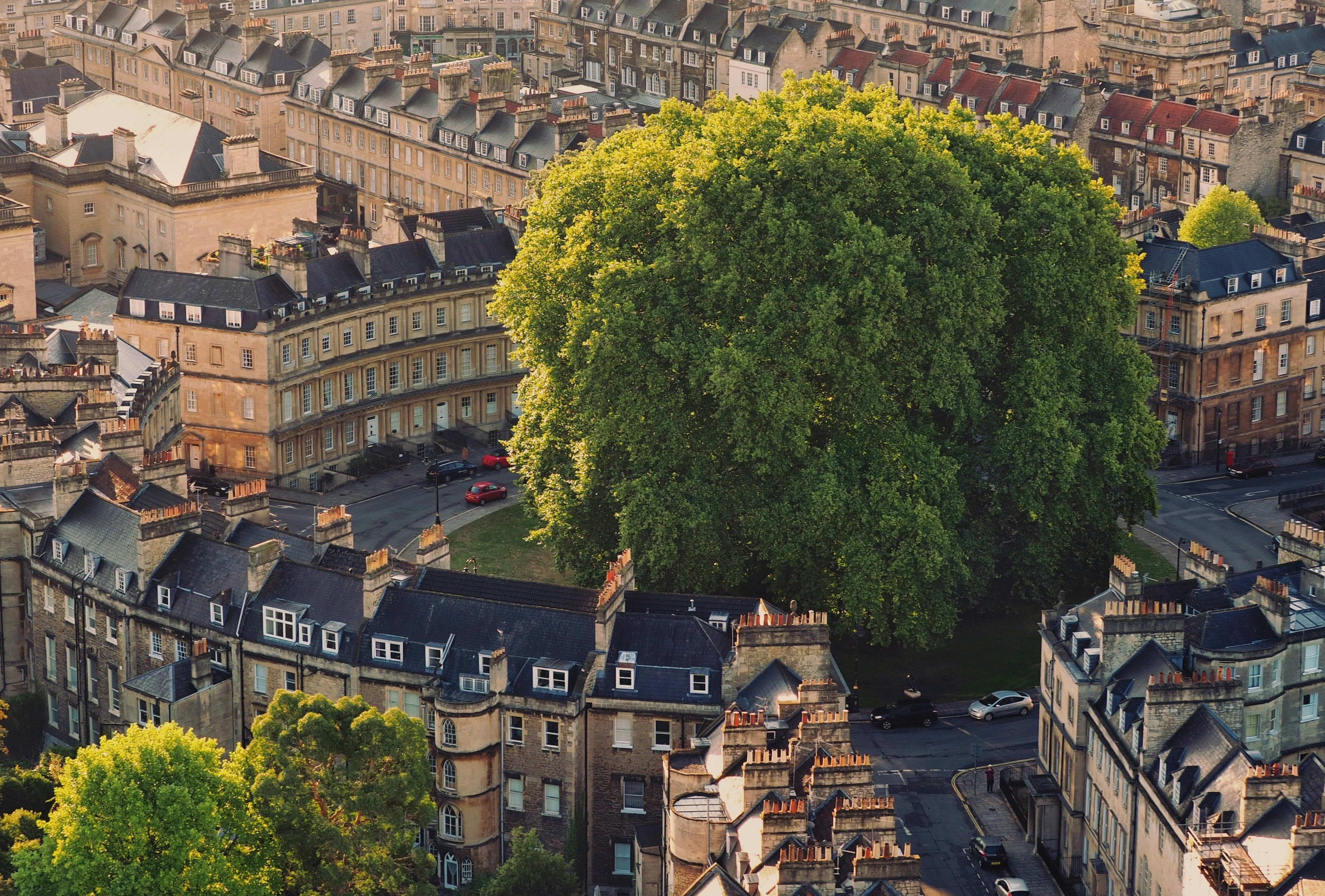
Meet your tour guide
Andy graduated from the School of Management in 1984 and enjoyed a career in sales and marketing in the automotive industry. After retiring from Vauxhall in 2014, Andy and his wife Cathy (BSc Business Administration 1984) moved back to Bath, where they met as students. Since then, Andy has volunteered as a Mayor’s Guide, leading tours around the city centre.
The Mayor of Bath’s Corps of Honorary Guides is a voluntary organisation, established in 1934, that provides two-hour walking tours of Bath every day of the year, except Christmas Day. The tours are free and the Guides do not accept gratuities. There are around 90 Guides who provide this service to visitors from around the world.
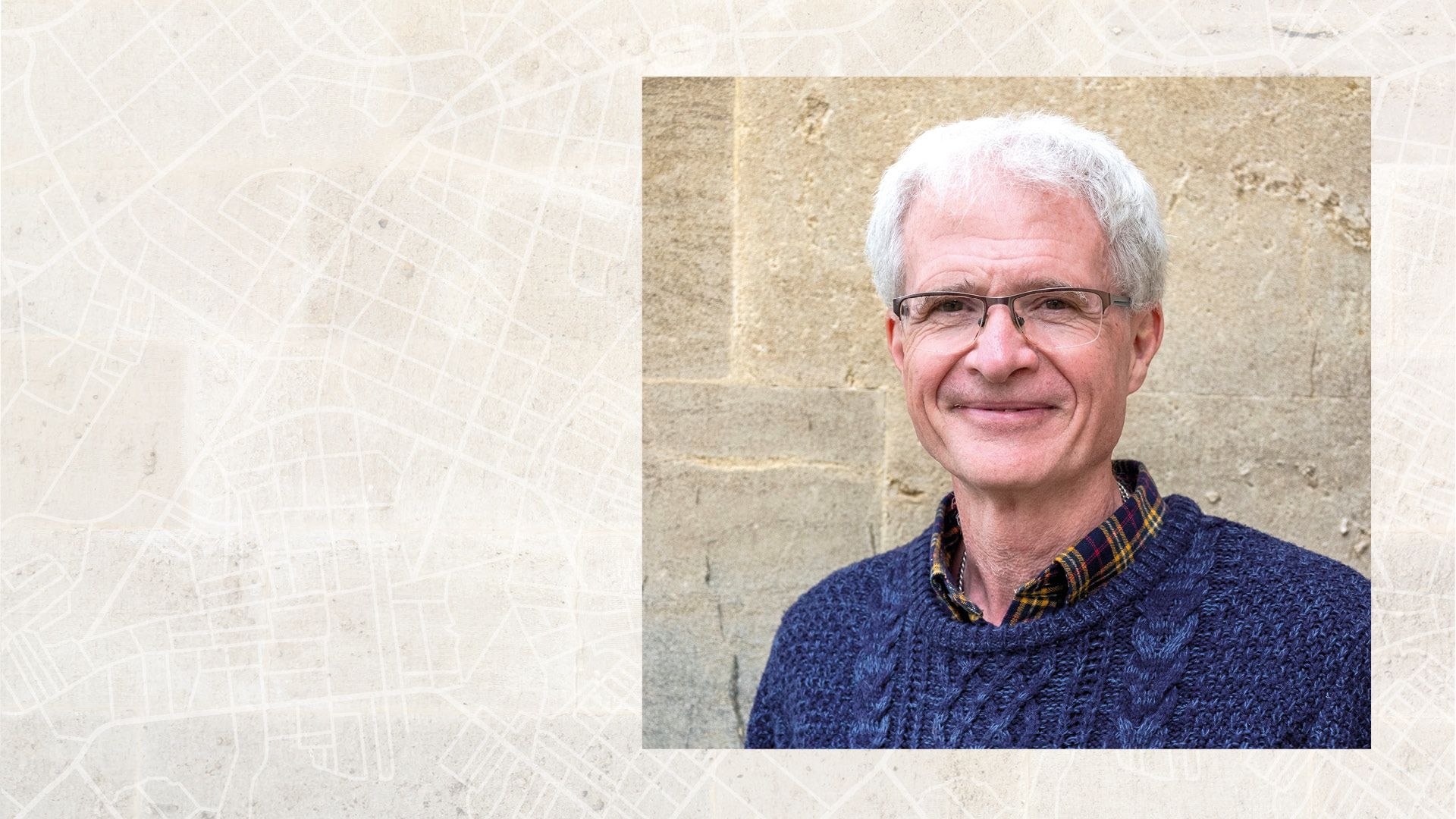
“Bath is the only place in the UK, and one of only 22 in the world, that has two UNESCO World Heritage inscriptions."
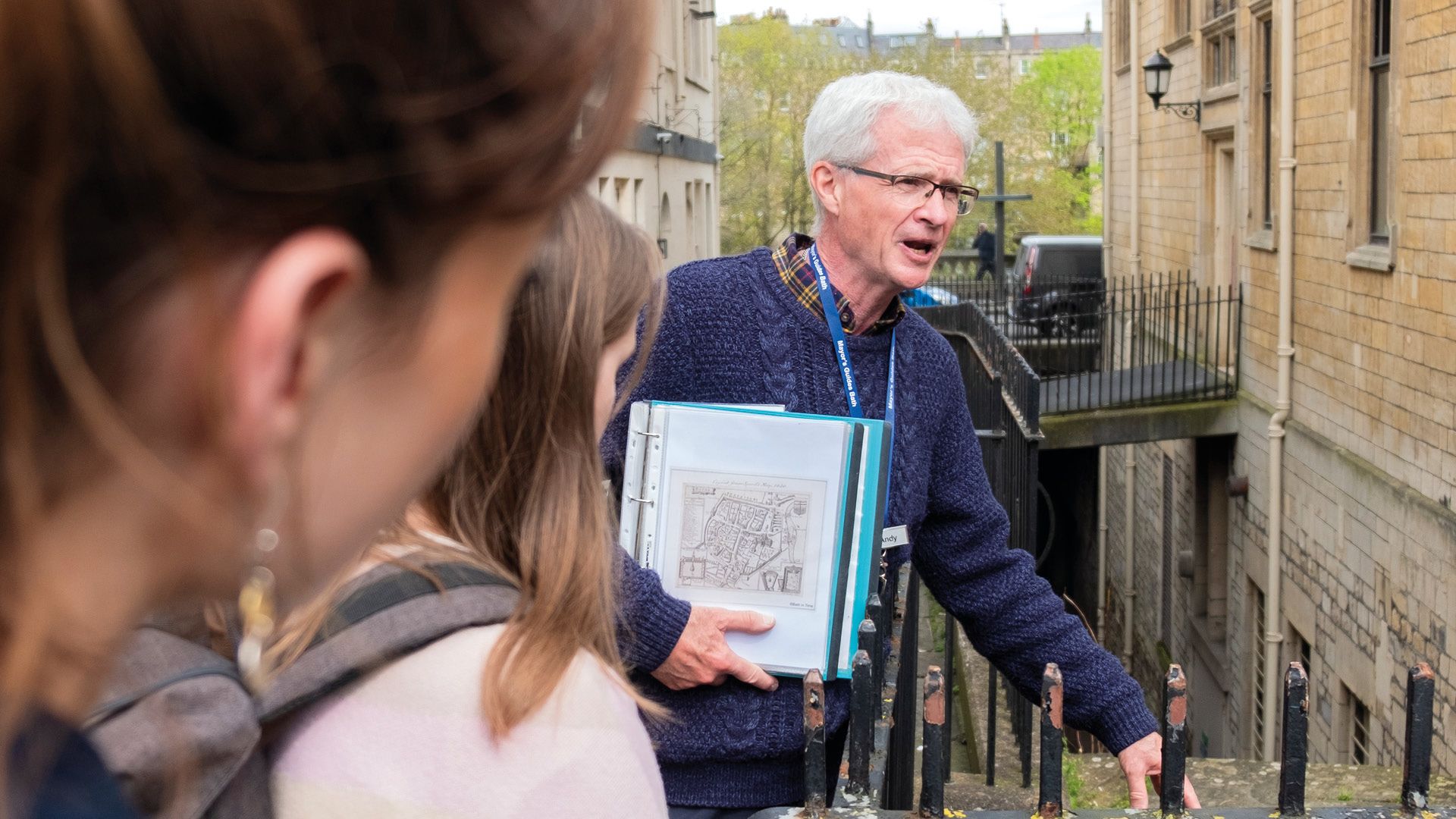
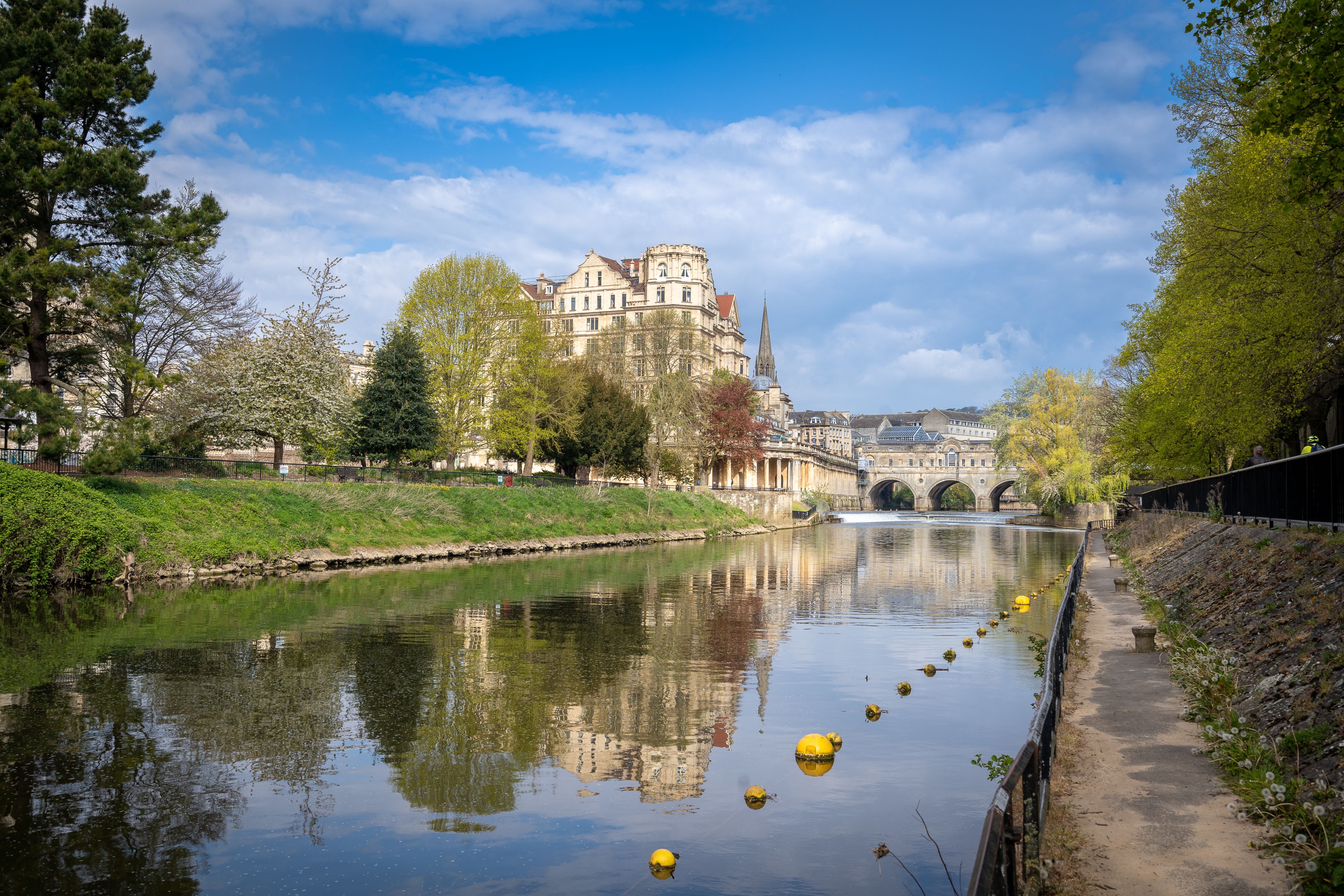
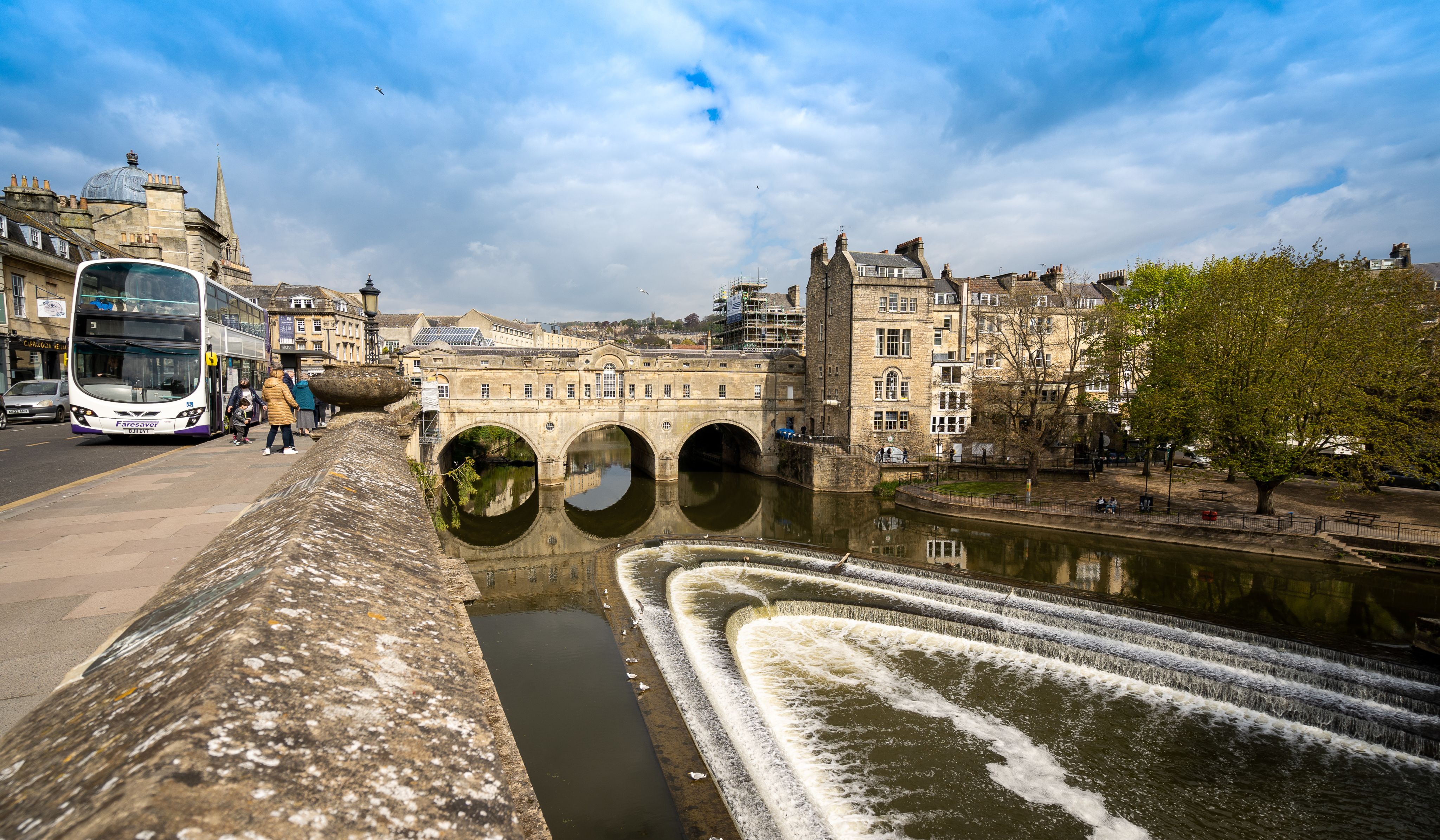
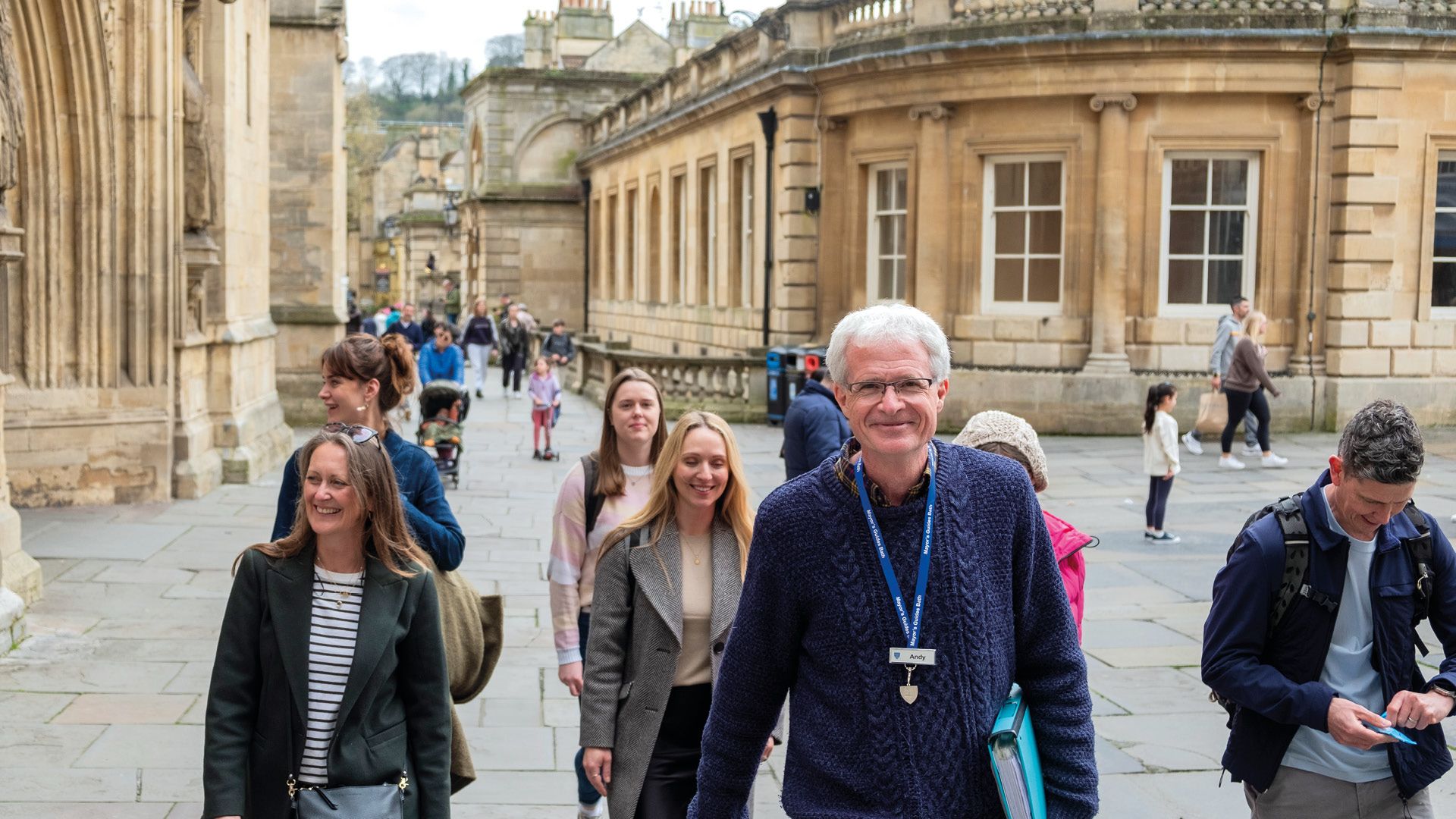

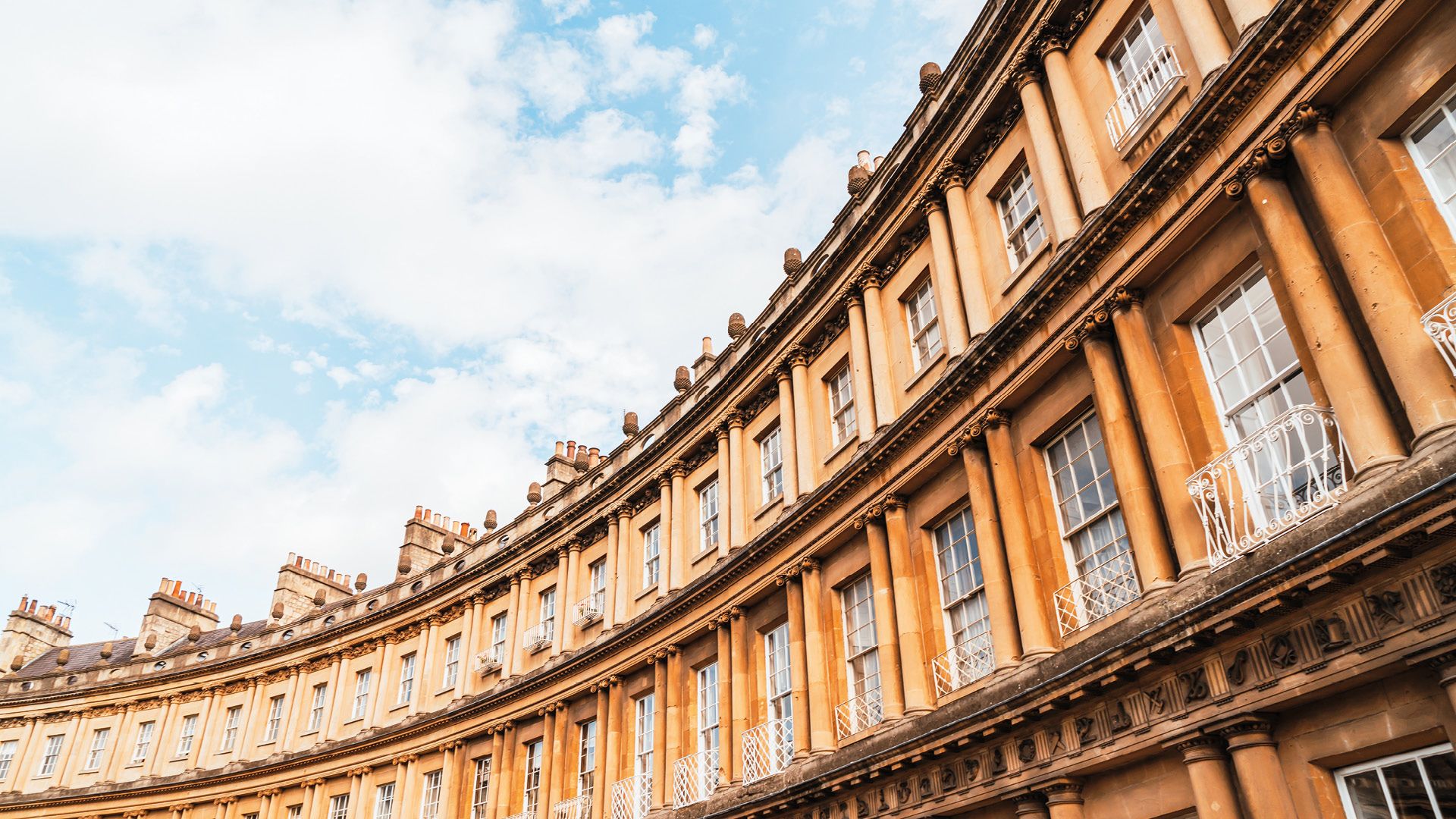
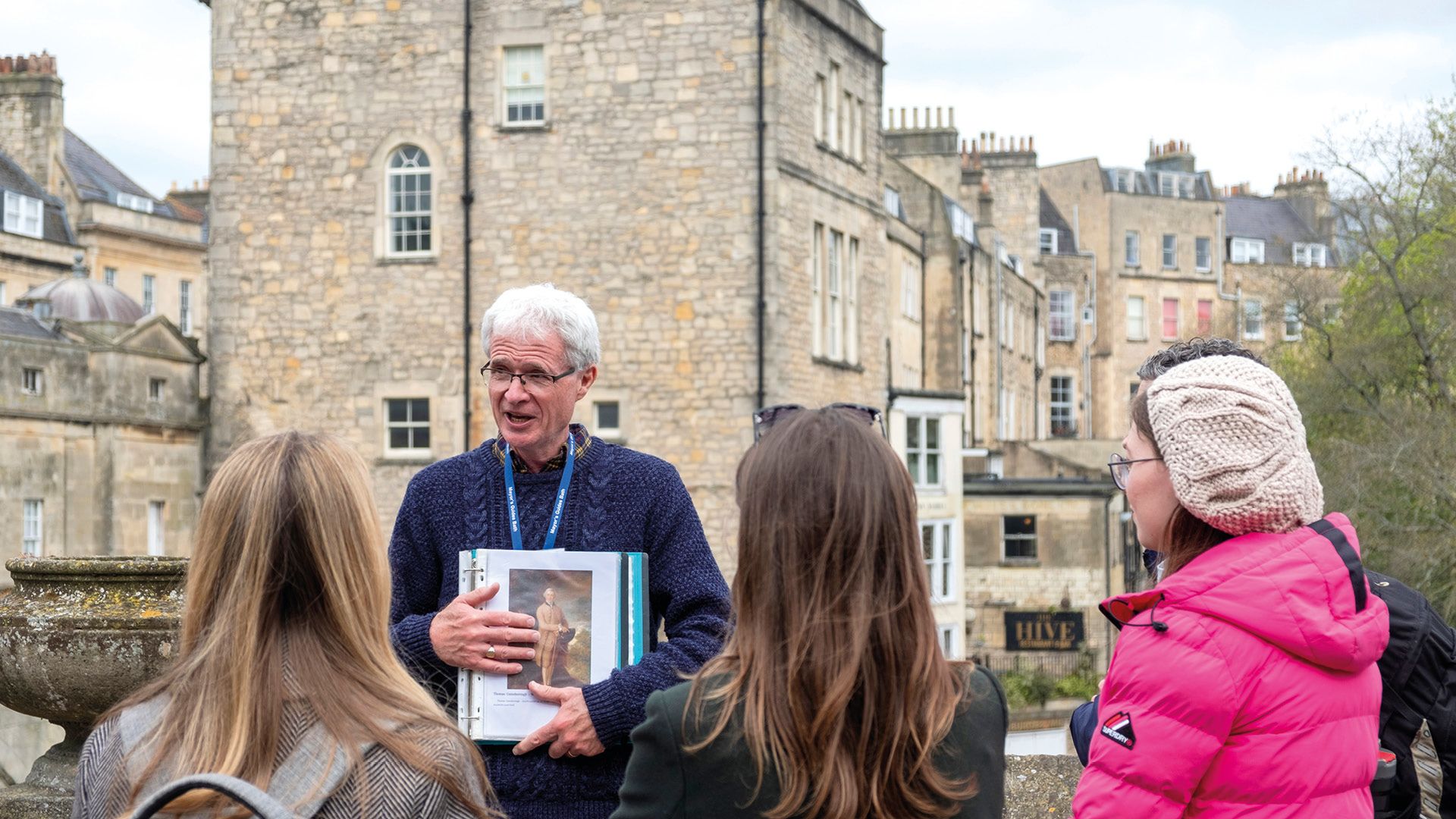

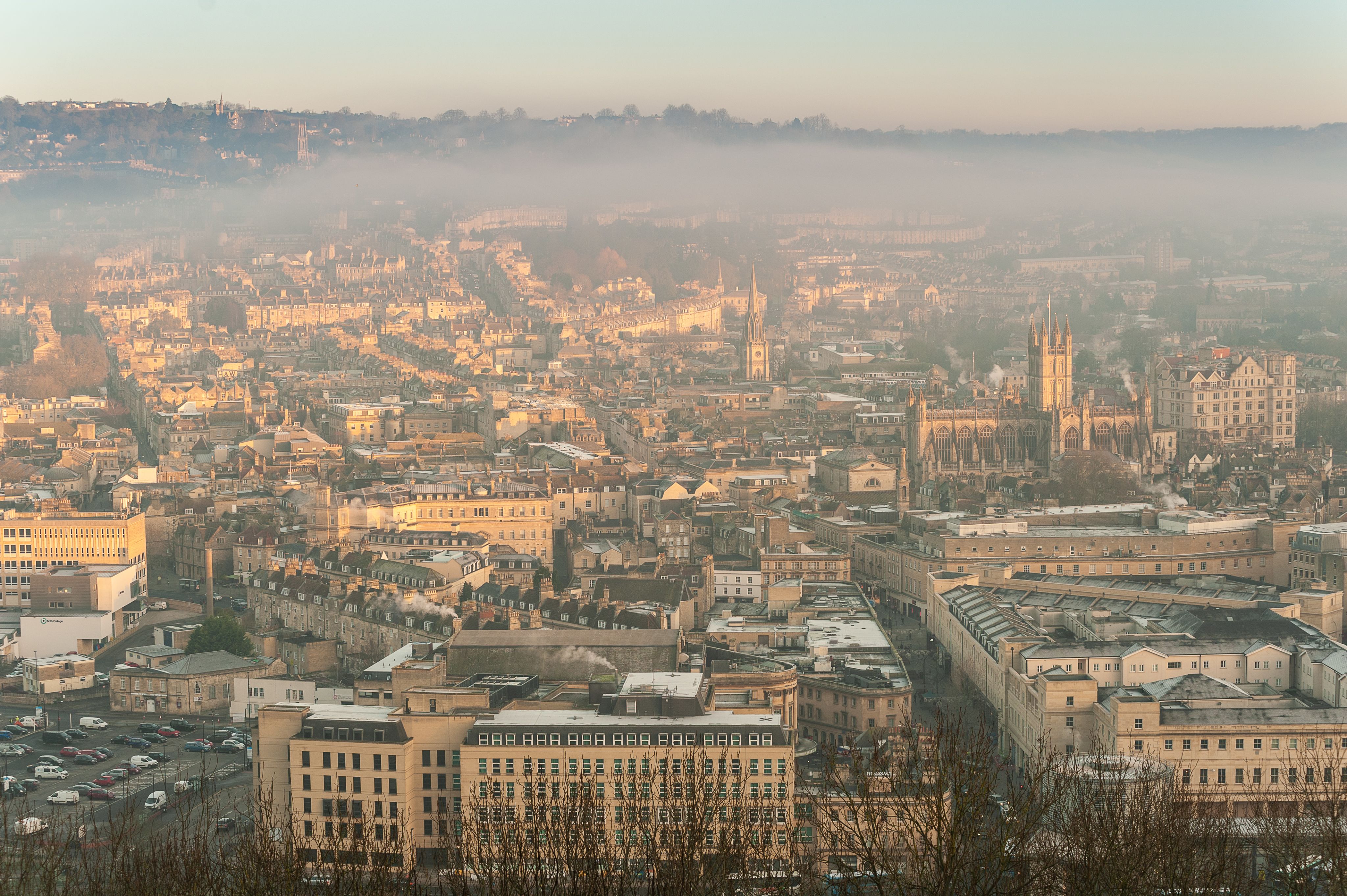
Eastgate: the last medieval gate standing
“Venture behind the building that was originally the Empire Hotel in Orange Grove, and you’ll find Eastgate – the only surviving gate from the medieval wall that surrounded the city. All the other gates – and virtually all the city walls – were dismantled in the 18th century due to the massive building expansion that took place in Bath. Only their names remain to describe areas in the city.
“This would have been the smallest gate and the passageway through it is called Boat Stall Lane, which leads down to the River Avon. At the time there were no bridges at this point along the river – just a ferry crossing – so limited traffic would have entered the city through this gate. It’s also worth a visit as it illustrates how the ground level of Bath has risen over time, primarily due to flooding from the River Avon.
“Two other parts of the city where you can find remnants of the medieval wall are in Upper Borough Walls, opposite the old Mineral Water Hospital, and in the yard behind Marks & Spencer.”
River Avon: so good they named it twice
“Sometimes I get asked if the River Avon is the same river that flows through Stratford, where Shakespeare was born, or whether it’s the same river as the Avon in Salisbury, an hour’s drive south of Bath. The answer is no, the UK has nine River Avons: five in England, three in Scotland and one in Wales.
“The reason why we have so many rivers with that name is that it derives from the Celtic word for river, which is ‘afon’. When rivers started to be given names, there was clearly some confusion and they were simply named the River Avon, which literally means River River.”
Pulteney Bridge: as seen on-screen
"One of the iconic images of Bath is Pulteney Bridge and its weir. It was commissioned by William Johnstone after he and his wife, Francis Pulteney, inherited a rural estate on the other side of the river. Architect Robert Adam designed the bridge, which opened in 1774.
“Not only is it Grade I listed, but it is also a unique bridge in the UK – and one of only four bridges in Europe – that’s lined with shops on either side. The other three are the Ponte Vecchio in Florence and the Rialto in Venice, Italy, and the Krämerbrücke in Erfurt, Germany.
“The first weir predated the bridge, as it was built in the 16th century, but the current iteration was built in the 1970s to further strengthen the city’s flood prevention scheme. It features in the movie Les Misérables, during Javert’s final scene (although actor Russell Crowe wasn’t in Bath, just his stunt double). My wife has also asked me to point out that she kayaked down the weir during her student days!”
Plasticine: built in Bath
“A fact to bring back memories from our youth… well, at least for some of us! 15 Alfred Street, by the Assembly Rooms, has the claim to fame of being the location where Plasticine – the popular children’s toy of the 20th century – was first manufactured.
“The house was owned by William Harbutt, a Victorian headmaster at a local art school. He invented this soft, non-drying modelling clay for his students in 1897 and soon realised it had other applications. For three years, it was made in the basement of his house but was so successful that he purchased a derelict flour mill in Bathampton and turned it into a Plasticine factory. This was the only place Plasticine was made until the factory closed in the early 1980s.
“The material was made famous by Bristol-based Aardman Animations’ models, Wallace and Gromit.”
Cue chalk: a potted history
“The Assembly Rooms are known for the elegant Ball Room and Tea Room, where the fashionable Georgians would party; however, in the 1820s a Billiards Room was installed in the building. It was run by a gentleman called John Bentley and one of the best players at the time, John Carr, used to play there. These two are jointly credited with the invention of cue chalk.
“Carr, who eventually became the world’s first professional player, discovered that applying chalk to the tip of his cue gave him much better control of the cue ball. He and Bentley ground down ordinary chalk and sold it in pill boxes for two shillings and sixpence (a half-crown) each. So, the next time you watch snooker player Ronnie O’Sullivan chalking his cue, think of Bath.”
A plaza in the Circus: wood you believe it?
“One of the memories most visitors take away with them is the Circus, an architectural gem of fabulous houses designed by John Wood the Elder, with its five beautiful trees in the centre. What is not so well-known is that when the Circus was completed in the late 1760s, there were no trees at all. The whole area in the centre was a lovely, paved plaza, until the current London Plane trees were planted in the 1820s.
“The trees are controversial in the Gilson household: my wife loves them, but I suspect John Wood the Elder is rolling in his grave. He designed the Circus so that whichever of the three roads you entered by, you would immediately see the magnificent architecture, but now for most months of the year the trees obscure the view. Either way, the Circus is full of fond memories for us as it was the scene for our graduation photos in 1984 after our ceremony in the Assembly Rooms.”
Uranus: discovered in Bath
“From the back garden of 19 New King Street on 13 March 1781, William and Caroline Herschel discovered the planet Uranus. Herschel and his sister were astronomers that also made some of the finest telescopes available in the 18th century. Following the discovery, William Herschel was appointed to the role of the ‘King’s Astronomer’, and the siblings moved to Windsor.
“Their house in Bath is now the Herschel Museum of Astronomy and it’s well worth a visit to learn about the remarkable Herschels. William also discovered infrared radiation, and Caroline was the first woman to receive a salary as a scientist, have findings published by the Royal Astronomical Society and be made an honorary member in 1835.”
Bath Olivers: a Georgian cure that takes the biscuit
“The Mineral Water Hospital on Upper Borough Walls was founded in 1738 to care for the impoverished sick. One of the founders, Dr William Oliver, believed that bathing in and drinking Bath’s warm thermal waters was good for you. He developed a biscuit to help patients reduce their weight, as well as to offset the metallic taste of the mineral-rich waters.
“Eventually, the healthy and wealthy discovered that the biscuits were nice with some cheese and port, and when William died, he left the recipe to his coachman – who set up a biscuit-baking business. It passed through various owners until the Fortt company acquired it in the 19th century and are stilling selling their Bath Oliver Biscuits today.”
UNESCO: a double award-winner
“Bath is the only place in the UK and one of only 22 in the world that has two UNESCO World Heritage inscriptions.
“In 1987, UNESCO awarded the entire city World Heritage Status, based on six factors that make Bath unique. These are the natural hot springs, the Roman remains, the 18th-century architecture, the 18th-century town planning, the social setting in 18th-century Bath and finally the natural landscape setting.
“In 2021, Bath gained its second UNESCO World Heritage inscription when the 11 Great Spa Towns of Europe gained this status due to the impact they had had on European development from the early 18th century through to the early 1900s.
“If you would like to learn more about Bath and its World Heritage status, the recently opened World Heritage Centre in York Street is worth a visit and it’s completely free.”

“There are many more interesting facts about Bath, so next time you’re in the city, I recommend you join one of the Mayor’s Guides walking tours. Every Guide follows a different route, so there are always new things to learn about this wonderful place.
If you live in or around Bath and would be interested in learning more about joining our ranks, take a look at the Bath Guides website and you’ll find a section titled ‘Becoming a Mayor’s Guide’, which is the start of the journey.”